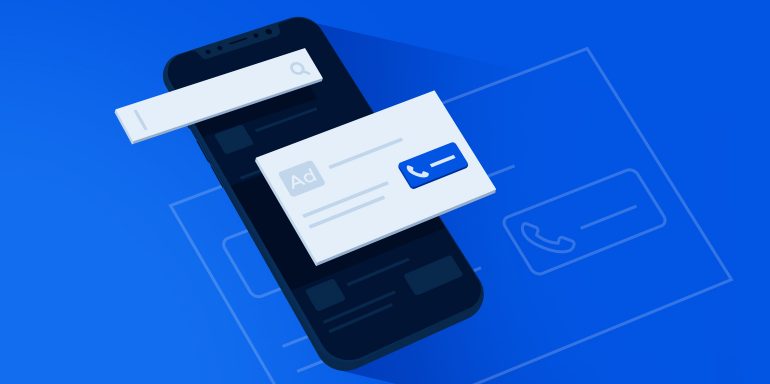- What are call-only ads?
- How do call-only ads work?
- How are they different than call extensions?
- Best practices
- Write compelling ad text
- Use location targeting & call-centric keywords
- Schedule ads during business hours
- Use insights from call reporting
- Retarget unconverted calls
- Grow your customer base with call-only ads
With the undeniable growth of mobile usage, advertisers must be equipped to take advantage of the trend. One way is to have an easily-accessible business on mobile search — and since mobile users are on the go, making a phone call is the fastest and easiest way to connect.
Thankfully, Google has always stayed on top of mobile advertising expansion. First, with it’s added call extensions, then with call tracking from a website or post-click landing page, and most recently, with call only ads.
What are call-only ads and why should you use them?
Call-only ads appear in mobile search results and only on devices capable of making phone calls. They are designed to encourage people to call your business, so when someone taps your ad, it automatically allows them to place a call from their device instead of sending them to your website:

[Update: Beginning in September 2019, Google improved the look of call-only ads. Now your business name and headline will show directly below your phone number, along with a larger phone icon, to make it more clear what you offer and make the CTA more prominent.]
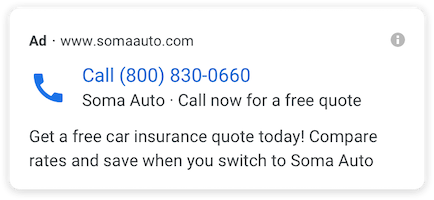
Before diving into call only campaigns, place yourself in your prospect’s shoes. Ask yourself:
- Is their issue immediate?
- Are they likely searching from a mobile device?
- Would it benefit them to speak to a real person?
If the answer to any of these questions is yes, then call only ads could be a good fit for your business.
In fact, any company that does business over the phone should consider using call-only campaigns, because according to HubSpot’s State of Inbound report, the most successful way to reach a prospect is by phone:

Not only that, but phone calls often generate higher quality leads, more revenue, and convert 10x more than digital-based leads.
How do Google call only ads work?
When creating a call-only ad campaign, you’ll be asked to enter the following details:

Something to consider here is entering your post-click landing page URL as the verification URL. Since call only ads initiate calls directly to your business rather than redirecting to a website, your landing page link won’t be directly displayed on your ad. However, it will be used to verify your ad and phone number.
In February 2019, Google moved the business name from the headline to the beginning of the description text. It was difficult to fit both a business name and compelling call-to-action in the headline, and moving the business name created more space in the headline for a CTA or important business details:
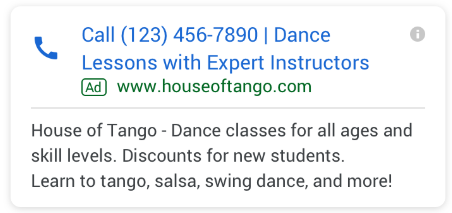
Call only ads are flexible in their appearance. To optimize for mobile, they may not always show every line of text you enter when setting up your campaign. You can also add select ad extensions — including location, structured snippet, and call out — for greater visibility, but some may be hidden to make the most of the smaller screen space on mobile devices. There’s no additional cost to add extensions, so it’s recommended that you add any extensions that are relevant to your business.
As of this article’s publishing (April 2019) Bing call-only ads don’t exist. You can, however, use call extensions with Bing Ads.
How are they different from call extensions?
Compared to call extensions, call-only ads have a few additional capabilities, allowing users to do the following:
- Choose from two different phone numbers to call
- Easily save the number to their phone’s contact list
- Quickly schedule a call-back from the advertiser when the line is busy
- Click through to your mobile landing page instead of calling
For comparison, the top example here is a call only ad followed by a call extension:
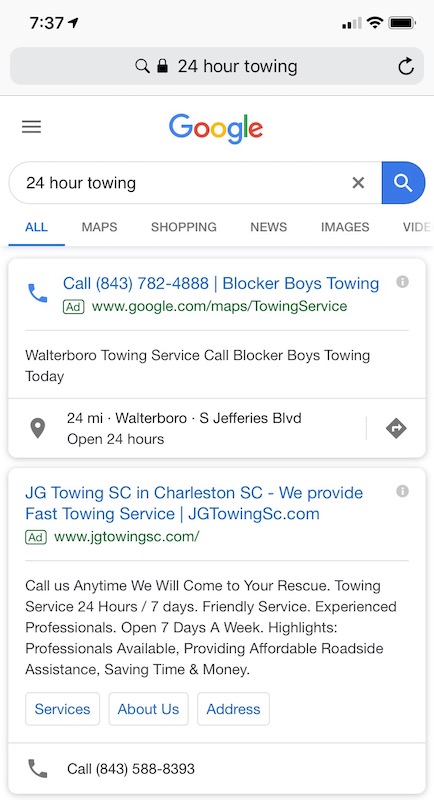
Another difference with call-only campaigns is that you can bid for calls to your business instead of clicks to your website. Knowing this, your CPC bid should match the value you would place on a phone call from your ad.
When your ad wins an auction, it’s shown on the Search Network (these ads are not yet available on the Display Network). When someone taps the ad, their mobile phone dialer opens with the number you set up (either your own number or a Google Forwarding Number), and they simply tap the call button to place the call.
Once you’ve determined that your product is a good fit for call-only ads and you have the basics in place, you’re ready to build your campaign, following these tips and recommendations.
Best practices for call-only ads
1. Write compelling ad text
The first step to creating a great call only campaign is designing an ad that convinces searchers to call in the first place. Taking full advantage of the allowed characters, use your ad copy to highlight your company’s unique value and give users a compelling reason to call:
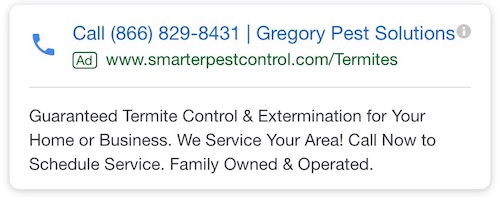
Also consider that many people want to call your business to speak directly with a real person, so use copy that assures they can.
2. Use location targeting and call-centric keywords
Location targeting is key, especially for local businesses. Be sure to use a local phone number, and automatically send calls to the store nearest to the caller’s location:
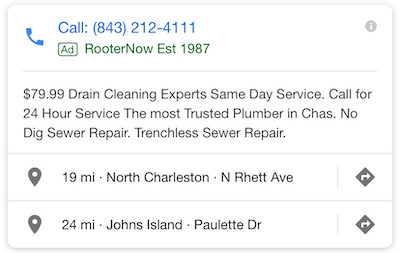
Targeting keywords that appeal to high-intent audience segments is also crucial. These could be location-based or keywords that resonate with customers further down the sales funnel.
3. Schedule ads during business hours
Generating a call is only half the process because if your staff is not available to answer the call, it’s a wasted click/tap and you won’t convert the prospect. Create an ad schedule that drives calls during business hours when you have someone available to actually answer the phone:

This may mean missing out on some calls outside of regular business hours, but that’s still better than wasting your budget (and your users’ time) by generating a call you can’t even accept.
4. Use insights from call reporting
It’s important to recognize that not all clicks lead to calls. A large disparity between clicks and calls could mean your audience changes their mind about calling, and you might need to rethink your ad copy or keyword strategy.
As for the calls that do make it through, it’s essential to measure call quality. Use a call intelligence tool that tracks the outcome of phone calls, so you can see which calls are converting into customers. With basic call tracking (from Google or a third-party-vendor), you can look at call tracking metrics, such as call duration, to get some understanding of call quality.
Seeing call lengths and frequencies, and knowing your peak call times, allows you to make more informed decisions about scheduling staff to answer those calls. You can ensure you’re at full capacity during the times that matter most.
5. Retarget unconverted calls
Just like not all clicks lead to calls, it’s also true that not all calls lead to conversions. This is where retargeting comes in.
Tapping into your call data enables you to retarget your unconverted audience more effectively because your messaging and overall advertising strategy are now based on their prior engagement.
Grow your customer base with call-only ads
Call only ads allow you to capitalize on tons of mobile-based prospects looking to reach your business quickly. Provide them with exactly what they expect by using the information and following the best practices listed above.
To create the most optimized call only ad, refer to the Instapage digital advertising specs guide, complete with the most up to date ad specs and targeting options.
